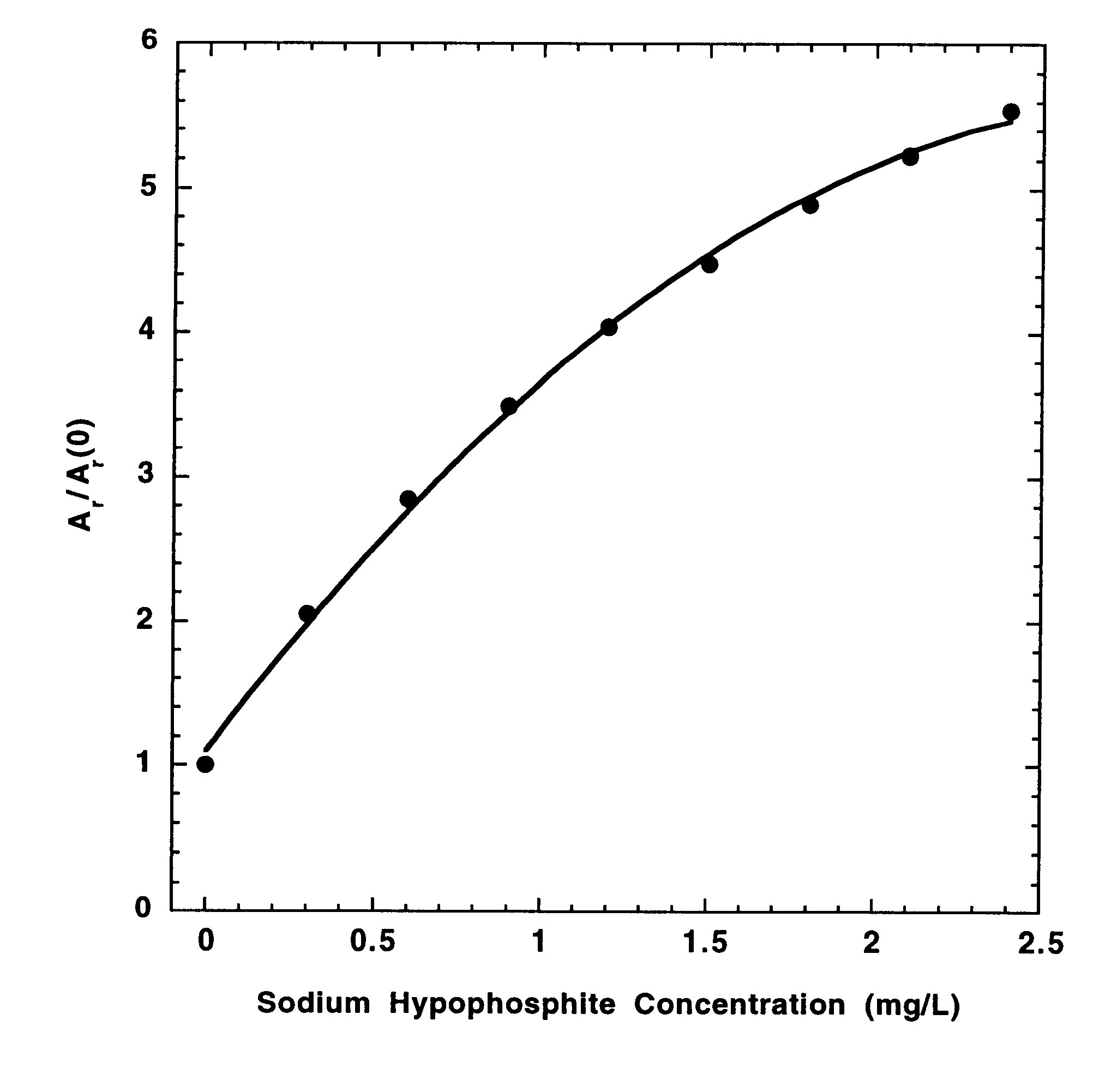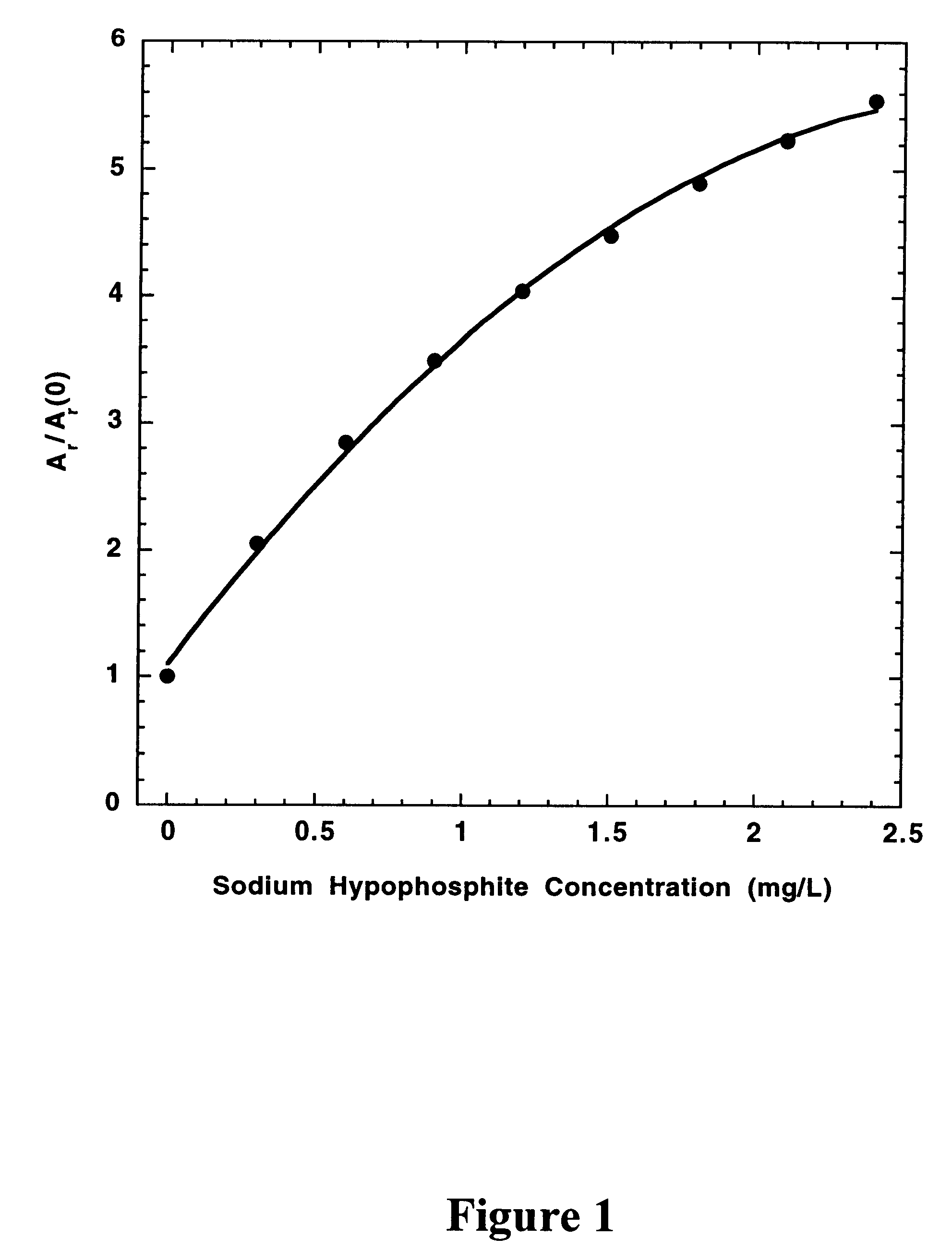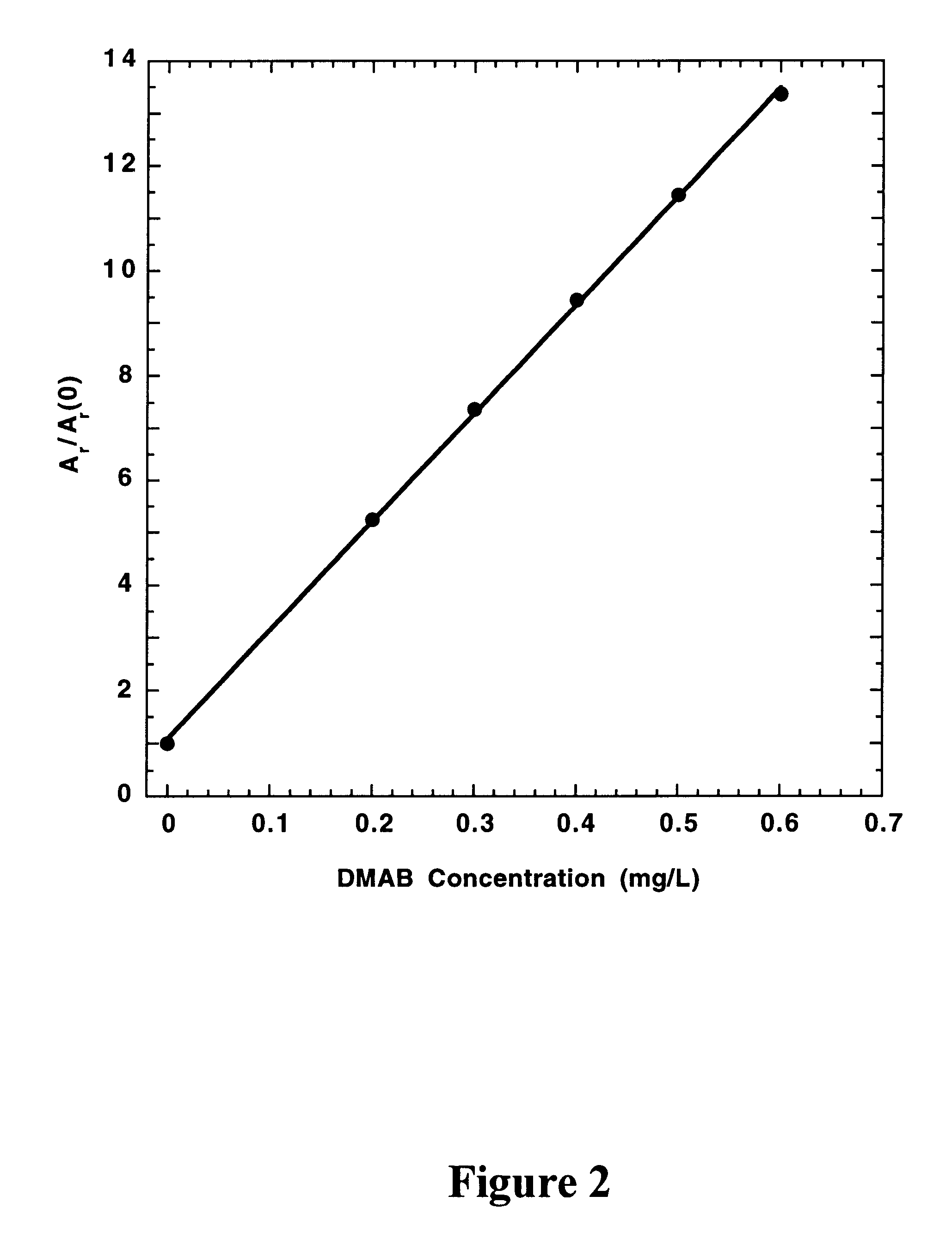Measurement of the concentration of a reducing agent in an electroless plating bath
a technology of reducing agent and electroless plating bath, which is applied in the direction of liquid/solution decomposition chemical coating, instruments, electrochemical variables of materials, etc., can solve the problems of limited depletion, high barrier layer conductivity, and accelerating species that is consumed with low efficiency
- Summary
- Abstract
- Description
- Claims
- Application Information
AI Technical Summary
Benefits of technology
Problems solved by technology
Method used
Image
Examples
Embodiment Construction
In a preferred embodiment of the present invention, the concentrations of hypophosphite and dimethylamineborane (DMAB) reducing agents in electroless cobalt and nickel plating baths are determined from the effects of standard additions of the electroless plating bath and the reducing agents on the CVS stripping peak area (A.sub.r) measured at a rotating Pt disk electrode in an acid copper sulfate electrodeposition solution. For A.sub.r measurements, the electrode potential is either cycled at a constant rate between fixed positive and negative limits, or is biased at a fixed negative potential and then scanned in the positive direction at a constant rate to strip copper deposited during a predetermined time at the fixed negative potential. The negative voltage limit or the fixed negative potential is preferably predetermined to be just positive of the potential at which copper is electrodeposited at a substantial rate in the absence of reducing agent additions to the electrodepositi...
PUM
| Property | Measurement | Unit |
|---|---|---|
| diameter | aaaaa | aaaaa |
| diameter | aaaaa | aaaaa |
| temperature | aaaaa | aaaaa |
Abstract
Description
Claims
Application Information
 Login to View More
Login to View More - R&D
- Intellectual Property
- Life Sciences
- Materials
- Tech Scout
- Unparalleled Data Quality
- Higher Quality Content
- 60% Fewer Hallucinations
Browse by: Latest US Patents, China's latest patents, Technical Efficacy Thesaurus, Application Domain, Technology Topic, Popular Technical Reports.
© 2025 PatSnap. All rights reserved.Legal|Privacy policy|Modern Slavery Act Transparency Statement|Sitemap|About US| Contact US: help@patsnap.com



